Editions
This book, 箱男 Hako otoko in Japanese, was first published 1973. (Here is the publisher’s site for the complete works.) Abe was also a photographer, and there was at least one exhibition of his works, at Wildenstein Tokyo, in 1996; this exhibition apparently traveled to Columbia University’s Donald Keene Center for Japanese Culture. The resulting exhibition catalog, Kobo Abe as Photographer, is difficult to find. (In 2014 Amazon listed one copy at $1,800.) I will be reporting on that catalog and the book itself in this post.
The book has a 35 mm “negative,” reproduced more or less life size, eight captioned photographs set against black backgrounds, and two pages of newspaper reports. The eight photographs were posted online around 2014, from the original Japanese edition:
The size and detail of the images
I am not entirely sure how much visual detail we are meant to see in the images. They are small in the English paperback. I will amend this page when I have seen the original Japanese edition and the English hardcover, but it seems likely Abe wanted them to be quite small on the page. The Wildenstein catalog reproduces the eight captioned images even smaller than in the English translation. There is a website with at least one installation shot of the Wildenstein exhibition, and it seems some other images were printed in larger formats. This matters because it sets limits on what a reader might plausibly have been expected to notice. It’s also the case that Abe could have photographed the obsessive (and often nauseating) details his narrators describe—but he chose to limit his photographs to middle-distance subjects.
Pertinent secondary literature
Abe also wrote about his photography practice, for example in the essay “Layer of Bubble,” and in essays in the journal Sogetsu which he edited. The 26th volume of his collected works in Japanese has his essays together with photos and 56 of his photographs. (I have not seen the last two items; I thank Mina Ando, of Tokyo Geidai, for this information.)
There is relatively little written about the photographs in Box Man. Ivan Vartanian’s essay “Kobo Abe as Photographer” is in Aperture vol. 217 (2014); Yasufumi Nakamori informs me there is also a BA essay by Kumagaya Yoshiki (Kanazawa College of Art, Japan, 2001). Terry Pitts also has a brief essay.
Did the author practice being a box man?
“Box men” are supposedly homeless men who walk around inside cardboard boxes fitted with viewing portals, listening holes, and various supplies. The book offers several precise descriptions of the boxes: it opens with instructions for making one, and closes with observations about writing on the inside of the boxes. Those passages are so full of unusual detail that I don’t doubt Abe constructed such a box, and also a periscope (pp. 5, 6, 154). The stains on the inside of the box, the function of a small shelf under the observation window, the various uses of a plastic tablet, outdo Nabokov in their myopic realism, and they produce, for me, a creeping sense that the author, as opposed to the narrator, enacted some of his subject. I don’t think it’s important to think about what Abe may actually have done: but the descriptions do tend to suspend a reader’s suspension of disbelief, pointing outside the narrative in ways that are analogous to the ways photographs—any photographs—point outside of fiction.
The first image
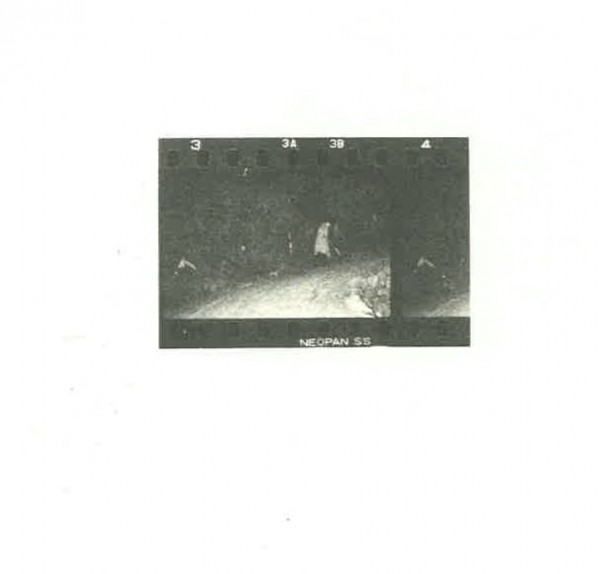 The first photograph in the book is a frame, and a portion of another frame, from a roll of 35mm film. It is reproduced the size of a contact sheet—that is, natural size—so it is small on the page. I’ve tried to give an impression of that here by scanning half the page. The photo is referred to as a “negative,” and it is said to be attached to some documents. (It isn’t a negative, as the inversion below, which I made in Photoshop, demonstrates: the photograph in The Box Man is actually cut from a contact sheet.)
The first photograph in the book is a frame, and a portion of another frame, from a roll of 35mm film. It is reproduced the size of a contact sheet—that is, natural size—so it is small on the page. I’ve tried to give an impression of that here by scanning half the page. The photo is referred to as a “negative,” and it is said to be attached to some documents. (It isn’t a negative, as the inversion below, which I made in Photoshop, demonstrates: the photograph in The Box Man is actually cut from a contact sheet.)
This first photograph is evidence of a central episode in the narrative: a man with an air rifle is to be seen escaping after shooting a box man. On p. 107 in the English edition, the narrator says:
I had made a very good shot. It was a back picture of someone busily going up the sloping road, concealing a rifle by trying to fit it to the length of his body under his arm. The way he cut his hair, the new made-to-order suit fitted to his round shoulders, the conspicuous wrinkles in his trousers, nonetheless of the best material, and the distinctive low shoes like slippers.
None of this is visible, and in another passage the landscape is described in a way that also does not match the image. (pp. 21-23) It is possible that readers are expected to take this as one of several ways in which the narrator is unreliable. This first photograph works as an emblem or token of evidence, rather than as actual evidence. Abe’s references to things in the photograph set it apart from otherwise similar images in Sebald and others that are too small, grainy, or dark to be clearly seen.
This first photograph functions as evidence, in the sense Seth Kim-Cohen adapts from Derrida (see chapter 4 for this): it asks to be believed. But the narrative continuously undermines it by providing descriptions of events that don’t correspond to what we see. By contrast the other eight images function as testimony, asking us to consider them as samples of the narrator’s (or narrators’) photographic practice, or as examples of places box men prefer, or as samples of life in Tokyo (as in the exhibition).
Aside from this opening photograph, images in The Box Man are of interest for two reasons. First, the eight photographs and accompanying brief texts distributed through the text do not coordinate easily or clearly with the narrative. They aren’t incompatible, but they don’t illustrate the text. Their slant relation to the narrative is one unusual thing about the book. The other reason is the intensely visual nature of the narrative, which proposes many kinds of visible objects—especially including box men—none of which are illustrated.
The Wildenstein catalogue
Before I consider the eight images, it may be helpful to reproduce some of the other photographs in the Wildenstein catalogue, to give a general sense of Abe’s photography, which is street photography fairly typical of the 1960s. It is from this practice he selected the eight images to put in his book.
Several of the photographs in the catalogue seem appropriate to the book, for example one of a woman’s legs. (There are a number of voyeuristic—and sexist—descriptions of women’s and men’s legs in the book.)
And several pictures of homeless people, who are also a recurring theme in the book.
Especially intriguing are two photographs involving cardboard boxes—the material of a box men’s box. In one photograph folded cardboard is used as a homeless person’s bed; that photo is reproduced on the same page as a picture of a man sleeping under newspapers:
On another page there’s a photograph of a box, although it could not be used to construct the kind of boxes described in the book. (Not because it’s broken but because it’s too small.)
One photograph even shows a strange-looking bundle, which may be reminiscent of the body bundled and thrown over a cliff partway through the novel:
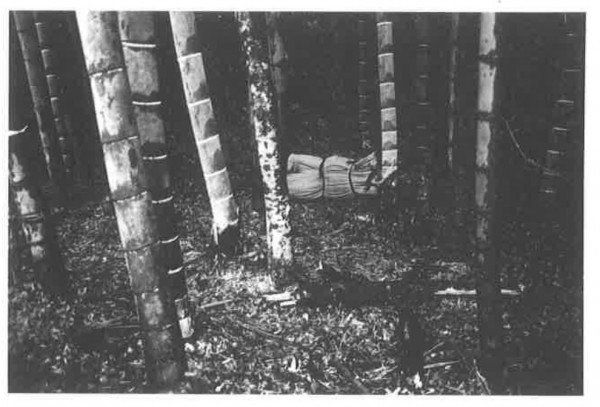
And, because of the book’s persistent voyeurism and exhibitionism, it’s also interesting to see pornographic images crumpled up and apparently discarded:
There are also more general parallels between the book’s squalor and some of Abe’s photographs, and, ontologically, between the narrator’s notion that the world can be seen most full from inside the universe of the box. (For example on p. 176: “instead of leaving the box, I shall enclose the world within it.”)
The eight photographs
The eight photographs that follow the negative, each with its caption and black background, are variously connected and disconnected from the narrative. They can be understood as products of the narrator’s professional life as a photographer and his visual interests. But the links to the text are uneven. (I will refer to the narrator in the singular, because it makes things easier, but Abe avoids any clear single identity.) The photographs are evenly spaced in the book, which I suppose may be the result of the original printing in signatures, and the conventional placement of images at the beginning or in the middle of each signature. (The English paperback is perfect bound.) If that is the case, there won’t be any correspondence between the images and the narrative on the facing pages, or even in the surrounding chapters. But the accompanying texts do suggest various parallels.
The Wildenstein catalog opens with these same photographs, each with Abe’s handwritten captions. Because the catalog is so rare I reproduce them here, along with the versions in the English translation of The Box Man
First photograph (p. 33)
The top image here is a page from The Box Man, which includes a white-on-black text that is disjunct from the narrative. The bottom image is from the Wildenstein catalog: it shows the same photo, and Abe’s handwritten notes underneath.
This first photograph is placed right in the middle of a surrealistic chapter in which the narrator imagines himself as a fish. In a seminar, Arthur Kolat proposed a convincing set of readings of this first photograph:
Shortly before page 33, as the narrator is describing the origin of the negative, Abe writes, “To tell the truth, before I became a box man I was a photographer who had just become independent” (p.24)… by the time I got to the first photograph on page 33, I felt like the narrator had established that he was a photographer…
As I see it, the image resonates with the narrative up to that point in the following ways:
1. It could be a photo that the narrator or another box man photographer (the “friend” from p. 29) had taken.
2. It could be a photo… from inside an open kiosk across the way from the closed lottery kiosk. In this reading the viewer is the kiosk attendant inside his box. The kiosk attendant, like the box man, is “hardly conspicuous” though not “inconspicuous,” “not especially uncommon, there is every opportunity of seeing one” (p.8).
3. The photo could exemplify a box man-like gaze from the position of the dark figure between the two kiosks. It is facing away from the kiosk whose shutter we look through, making our own gaze voyeuristic, while the gaze of the figure is directed at the closed box of an inscrutably shuttered lottery kiosk.
4. The photo could be of a place which is suitable to the fictional box men. On page 25 the narrator says, “The area around a station or a crowded shopping district was more suited to a box man. I liked the honesty of it. I felt at home with it–three or four straight roads pretending to be a labyrinth.” For me kiosks call to mind, among other places, train stations and their environs.
Some of these readings would potentially fit all eight photographs. It is likely Abe intended them to represent work the narrator had done as a professional photographer, at some unspecified point before the narrative of the book gets underway.
Second photograph (p. 49)
This photograph, too, comes in the middle of unrelated material. It is presumably the side of a railroad car. The text recounts an episode that is pertinent to the book, and I think a reader will assume that it will come in later in the novel—but it doesn’t. The oddity of this only becomes apparent when a reader looks back through the book after finishing it.
In this case the image is attached to the text. The narrative at this point is about a hospital, so the image is plausibly something the narrator might see. The text fragments are very close to sentences in the book (compare pp. 67, 104). The text to the left of the image reads “Hospital: no smoking.” (Thanks to Sylvia Liang for this.) A reader encountering this might therefore begin to wonder if she missed some tighter connections between the first two images and their accompanying narrative.
Fourth photograph (p. 81)
Here the accompanying text takes up a theme that is being developed in the narrative, about the shame of being seen and the pleasure of seeing. It is close, for example, to some thoughts on p. 86:
When one cannot avoid being seen it is common sense to demand compensation. As a matter of fact, in the theater or in the cinema usually those who look pay money and those who are looked at receive it.
In addition there is an entire story late in the novel that rehearses this theme (pp. 149-58).
Here the thought about small things is echoed several places in the text, for example on p. 42:
The various details of the scenery become homogeneous, have equal significance. Cigarette butts… the sticky secretion in a dog’s eyes… the windows in a two-story house with the curtains waving…
The theme of large and small also fits the image: large thing, a house, seen in a small thing, a mirror—but the theme doesn’t have anything to do with the narrative at this point, which has to do, again, with women’s legs.
Sixth photograph (p. 115)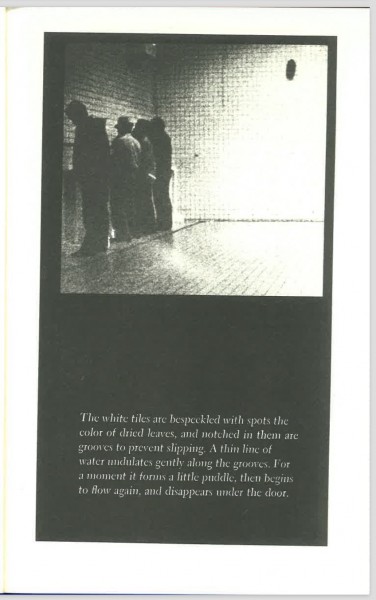
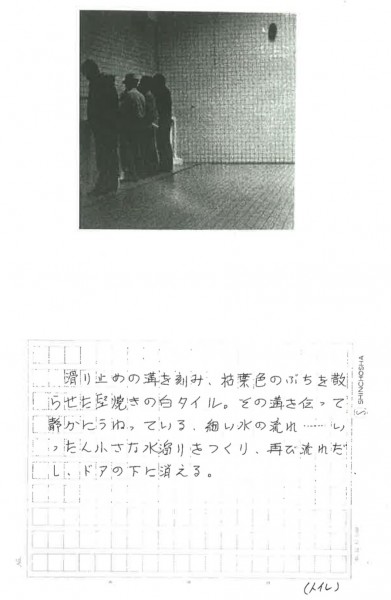 In this case there is a slant rhyme with something in the text on the facing page, which is about paint: “On the old white door the layers of paint cannot conceal the surface scratches.” That, I assume, is a coincidence. The word in parentheses at the lower right of Abe’s draft for the accompanying text reads “toilet,” and several of the other pages have such titles: the fourth photo is called “wheelchair,” and the first one “kiosk.” (Thanks to Ange Wong for this information.) It’s not clear if those were mnemonics or if they might point to other connections to the text.
In this case there is a slant rhyme with something in the text on the facing page, which is about paint: “On the old white door the layers of paint cannot conceal the surface scratches.” That, I assume, is a coincidence. The word in parentheses at the lower right of Abe’s draft for the accompanying text reads “toilet,” and several of the other pages have such titles: the fourth photo is called “wheelchair,” and the first one “kiosk.” (Thanks to Ange Wong for this information.) It’s not clear if those were mnemonics or if they might point to other connections to the text.
The text here is related to a theme developed on pp. 143 and 149, where Abe’s narrator wonders if the world isn’t all made of box men, and if we all don’t in fact want anonymity. But it has nothing to do with the narrative on the facing page, which is about murder and suicide.
Eighth photograph (p. 147)
And finally, the last photograph is again unrelated to the text. In English, this reads as a poem.
For me the photographs are detached from the narrative, tethered only by inconsistent links of the kind I’ve been mentioning. The texts have many more points of resonance, but they, too, present themselves as having been written outside, and possible before, the book itself. I take this detachment not as a simple accompaniment to the novel, but as a persistent force pulling a reader’s attention away from the novel—making us think either of the narrator’s possibly more normative previous life as a photographer, or as things box men might plausibly see. They move persistently away from the story, and in that they are interesting—and very much unlike photographs in Breton, Rodenbach, Sebald, and most other novels with photographs.
Ekphrases
For me the most curious aspect of the use of images in The Box Man is the contrast between what is shown and the very visually detailed ekphrases in the text. Here are some examples.
1. The book opens with an extended ekphrasis on how to construct a box man’s box. It is mostly quite precise and easy to visualize. A reader encountering this for the first time might well wonder why no box is illustrated. It’s a kind of ekphrasis that insists on its absolute veracity and visual detail at the same time as it implies its fictionality by refusing to become visual.
2. On p. 8, the narrator asks the reader if he’s seen a box man, and then says the reader must have seen one. Readers may flip through the book at this point, to see if there is a picture of a box man. Abe puts the image of the box man as forcibly as he can into the mind of the reader, but his photographs refuse to represent one because they are taken by one.
3. Then there’s the crazy passage where the would-be box man paints his face: he paints his lips green, and “after that he traced, in gradually expanding circles, the seven colors of the rainbow, beginning with red, around his eyes.” (p. 13) This surprising development isn’t explained, and the clownish colors make a strong contrast with the grainy realist street photography.
4. Throughout the book there are detailed, unexpected descriptions of intimate and sometimes disgusting details—secretions, scabs, pubic hair. These seem to be things the box man sees extremely well. They contrast, as I noted, with the middle-distance photographs with their lack of detail.
5. In a seminar, Guy Eytan noted that the box man, or his photographer persona, seem to dislike or fear photographing the sky. In the opening pages of the book we’re informed box men have to look down (in order not to trip), and the book has many description of legs. That downward-facing vision, which is also reminiscent of a child’s way of noticing things that are at its height, is also in contrast to the photographs.
There are a dozen more examples, but this is enough to suggest how intensely and provocatively visual the writing is, and how reticent and opaque some images are. The book is replete with intense acts of seeing, but it is illustrated by street photography in which it seems anything at all might be seen. In that respect The Box Man is like a thesis about the inadequacy of photography in the face of written description.
Envoi
The central fantasies of The Box Man are about voyeurism, in which women are objectified in the most childish and relentless way. Several of the crucial scenes are openly masturbatory fantasies. Over the course of the book, the effect of such scenes is extremely unpleasant. If Abe had thought of this state of affairs ironically, or if he had presented it as a degeneration of normal relations, then it might have worked: but when he wrote this book, his imaginative universe was apparently so shriveled, so poisoned by his indulgence in voyeurisms, that he could only imagine women as things that undress while they are peered at from inside cardboard boxes. I have no problem with violent, misanthropic, deranged, infantile, or unredeemable themes: but this one is also unreflective. Its sourness is reflected, in a distorted way, by the photographs, which are bitter about contemporary Japan, its poverty, pornography, and alienation. The ontological fantasy of the box man, in which we are all box men, and our society both suffers and enjoys a squalid anonymity, is not directly illustrated by the photographs, but they do something similar, and for me that slant rhyme is part of what makes The Box Man so fascinating.
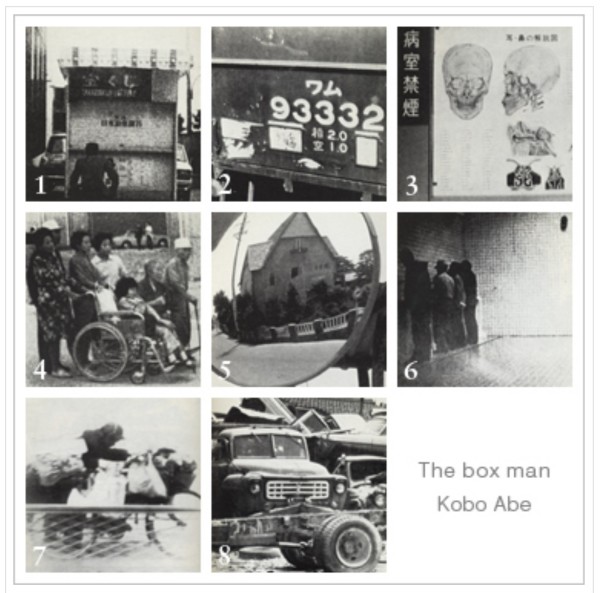
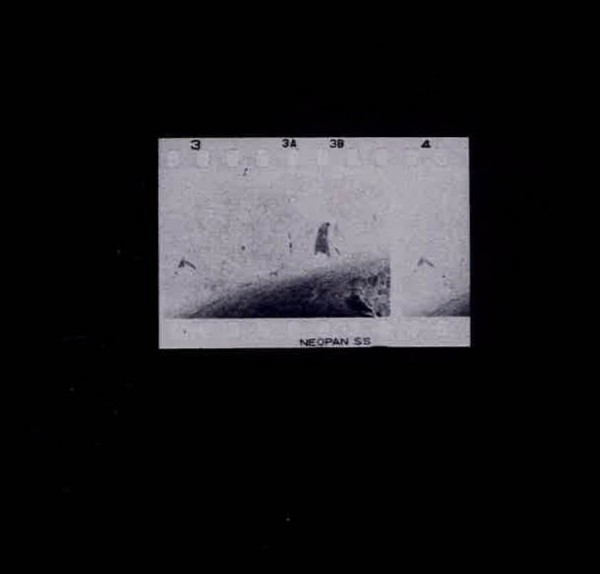
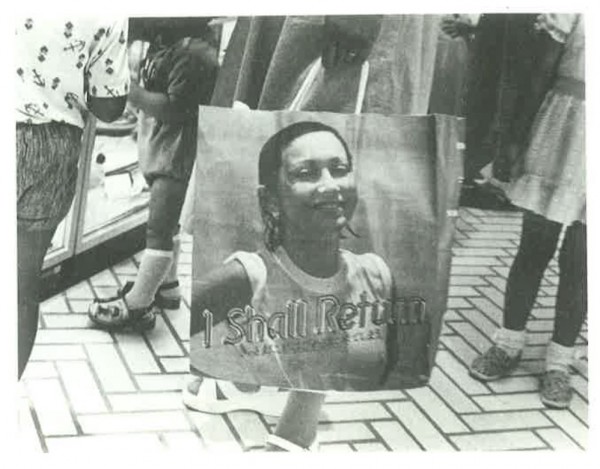
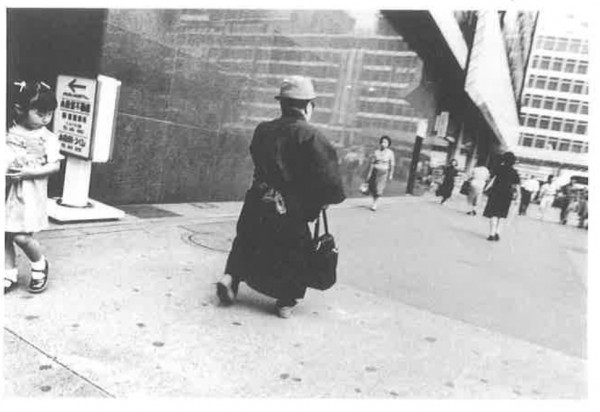
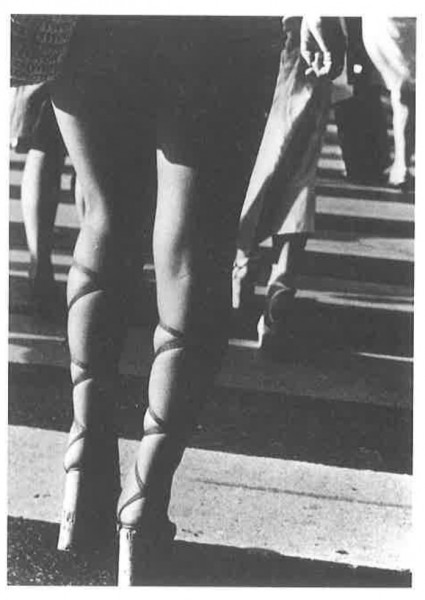
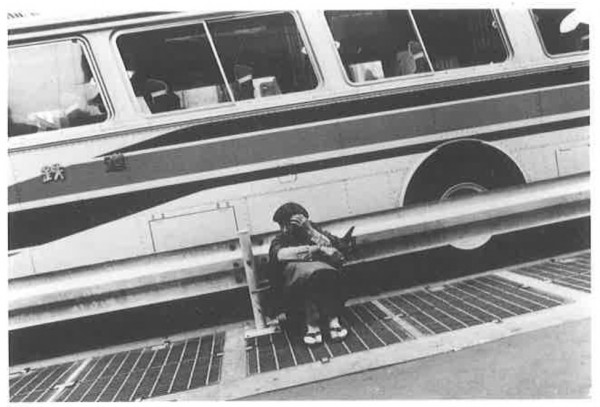
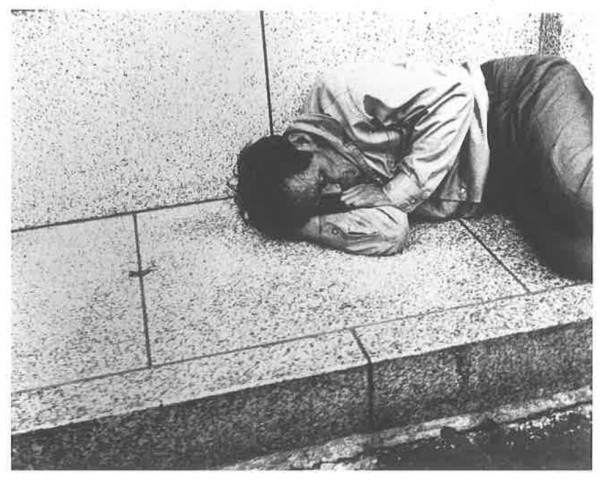
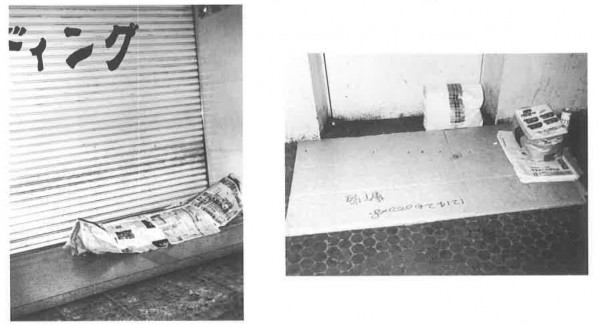
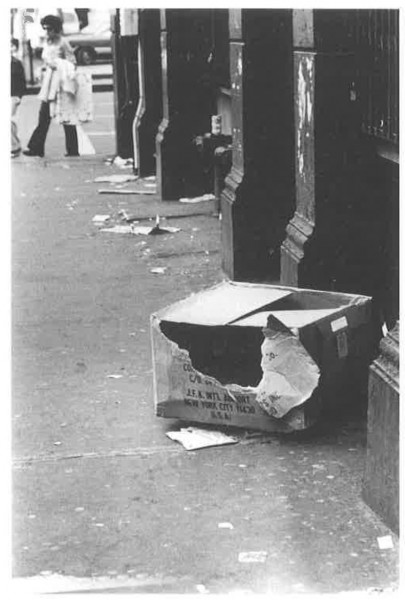
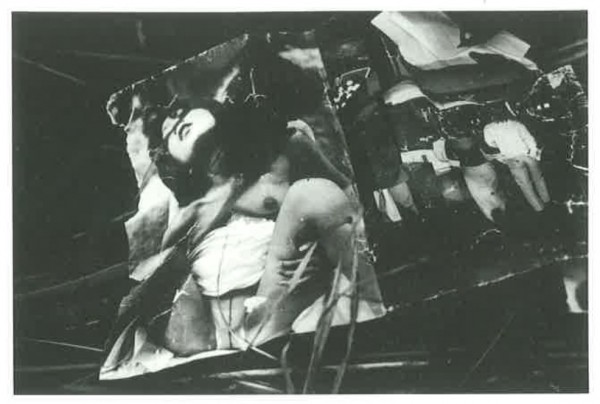
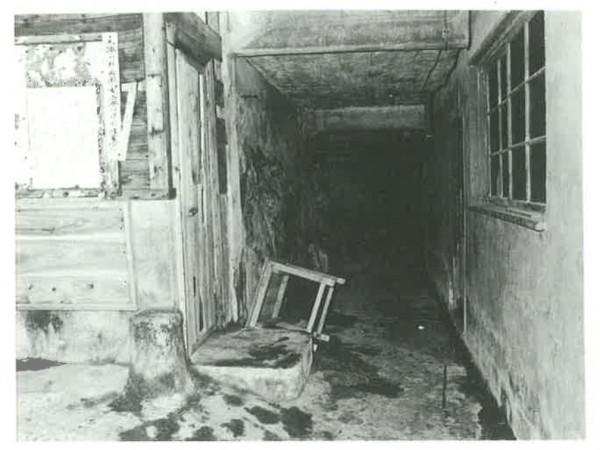
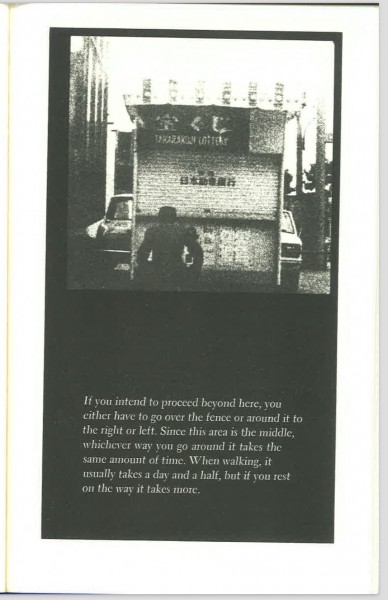
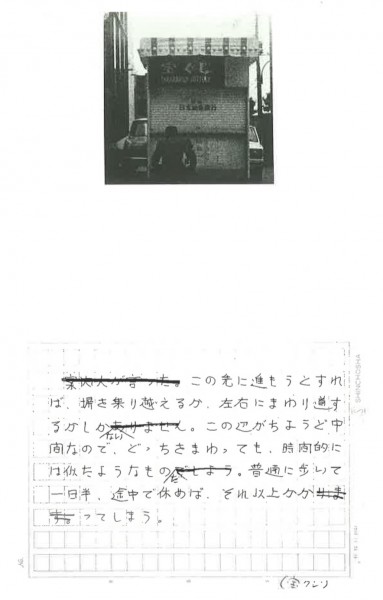
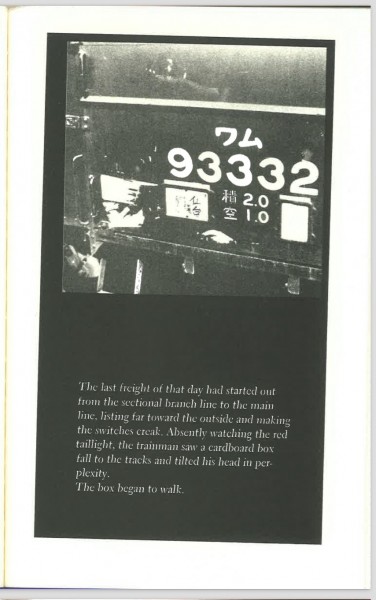
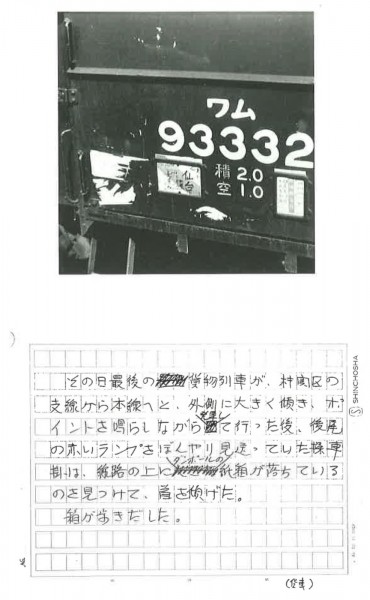
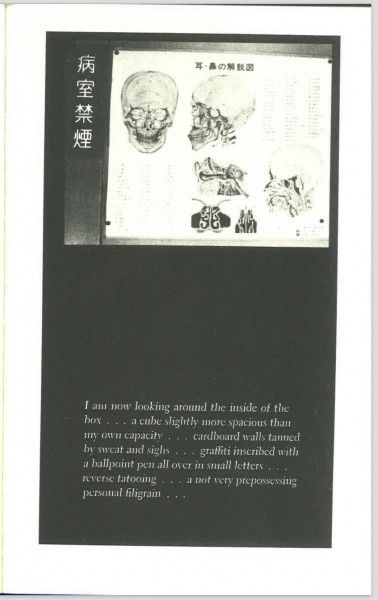
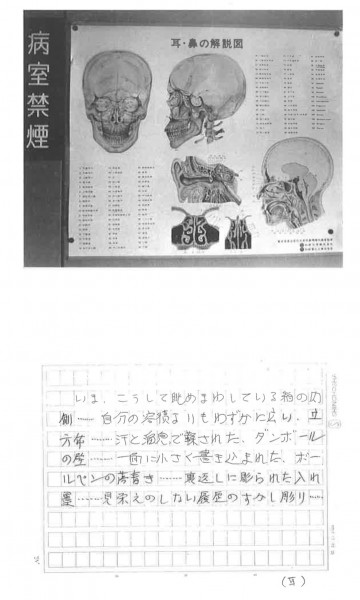
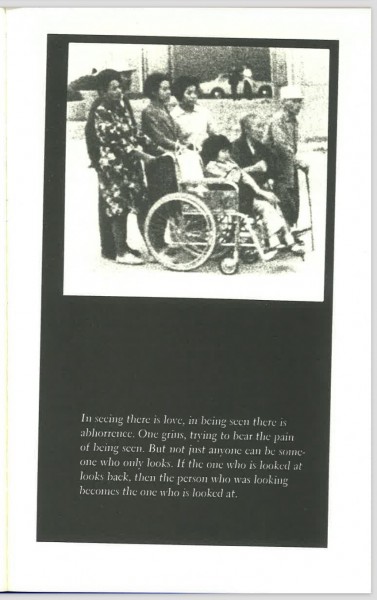
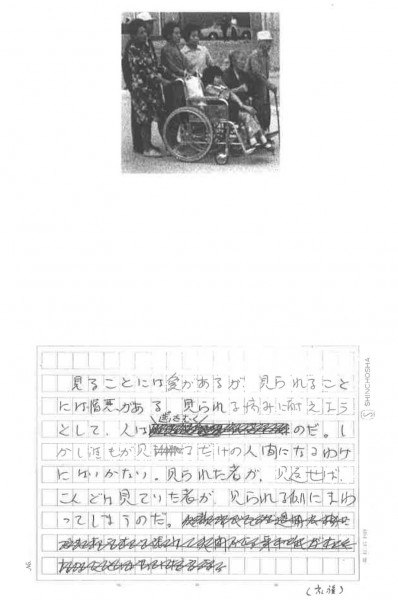
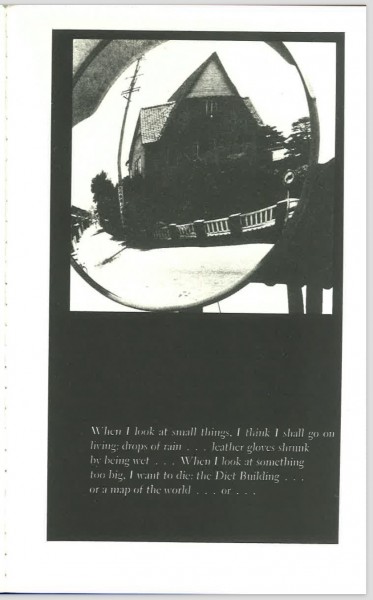
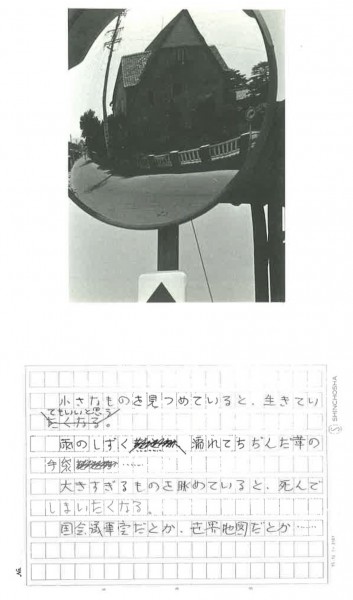
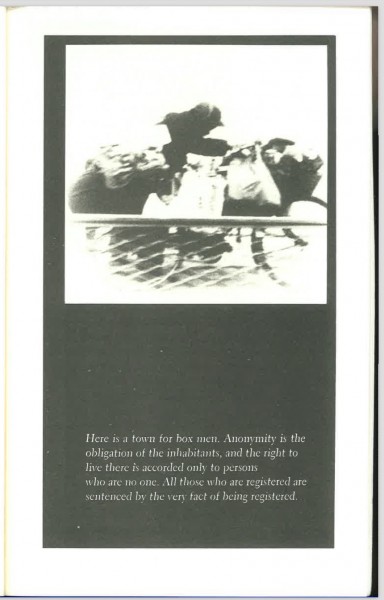
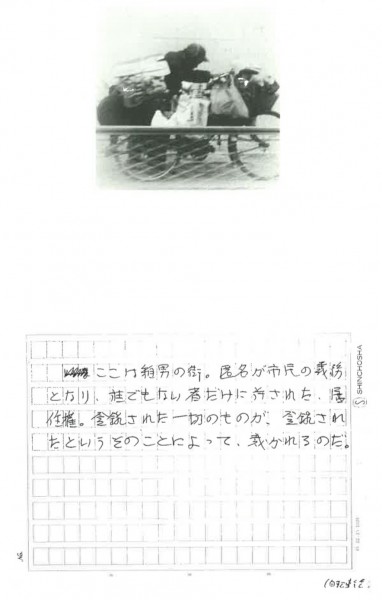
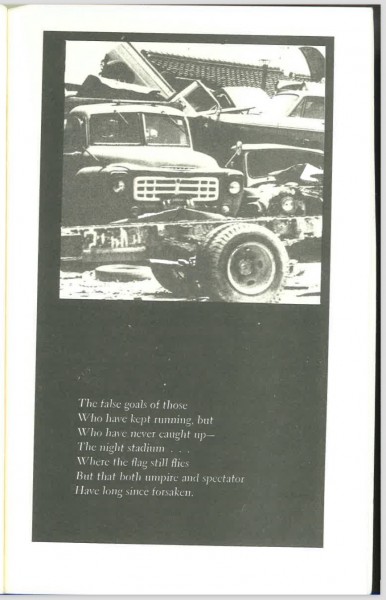
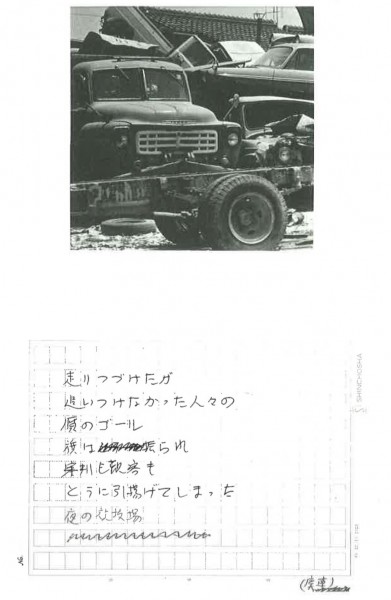
I just finished reading The Box Man an hour or so ago. When I started reading and the first grainy black and white photograph jumped at me I never really paid much attention somehow. For the most part, as I read on, I detached the narration of the book as I read the descriptions of the pictures. It was almost natural to do that instinctively.
I really loved the narrative style. The convoluted mess of it’s intimate details that we get sucked into Abe’s own train of thoughts. Where sometimes we become the character, the narrator and the writer.
A sense of detachment pervades the book but now I think it was intentional to create an off balance. I think there are clues to look for and figure out the Box Man’s mind.
The second last sentence is still fresh in my mind, “The clues are numerous, and it is reasonable that that the truth should exist in proportion to their number.” And though I need more time to chew on the book, I’d personally like to believe in the Box Man’s line.